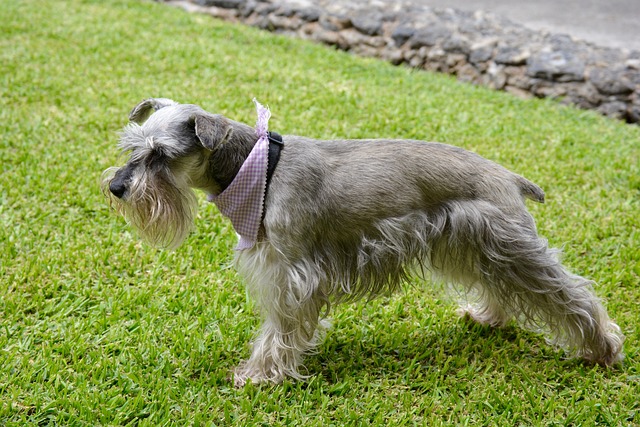Schnauzers are a popular and lovable breed of dog known for their distinctive beards and playful personalities. Whether you’re a proud owner of a Schnauzer puppy, an adult Schnauzer, or a senior Schnauzer, one of the essential aspects of caring for your furry friend is ensuring they get the right amount of outdoor time to relieve themselves. In this comprehensive guide, we’ll discuss the ideal frequency for taking your Schnauzer outside to pee, taking into consideration their age and specific needs.
Understanding Your Schnauzer’s Age and Peeing Needs
Before we delve into the specific guidelines for puppies, adult, and senior Schnauzers, it’s crucial to understand that age plays a significant role in a dog’s peeing frequency. Just like humans, dogs’ bodies change as they age, affecting their urinary habits. Here’s a general overview of how age affects your Schnauzer’s peeing needs:
-
Schnauzer Puppies (0-6 Months)
Schnauzer puppies are bundles of energy and curiosity. They have smaller bladders and less control over their bodily functions compared to older dogs. As a result, they need to go outside to pee more frequently. Here’s a guideline for how often to take a Schnauzer puppy outside to pee:
- Every 1-2 hours: Puppies have limited bladder control and need frequent potty breaks. Be prepared to take your Schnauzer puppy outside every 1-2 hours, especially after meals, playtime, or waking up from a nap.
- During the night: At night, puppies may need to go out every 2-4 hours. You can gradually increase the time between nighttime potty breaks as your puppy gets older and gains more bladder control.
- After intense activities: If your puppy is engaged in active play or exercise, they may need to go out more frequently, so keep an eye on their cues.
It’s essential to be patient with your Schnauzer puppy during the house-training process. Positive reinforcement and consistent routines will help them learn where and when it’s appropriate to relieve themselves.
-
Adult Schnauzers (6 Months – 7 Years)
Adult Schnauzers typically have better bladder control than puppies, allowing them to hold their urine for longer periods. However, their peeing frequency still depends on various factors, such as their size, diet, and activity level. Here’s a guideline for how often to take an adult Schnauzer outside to pee:
- Every 4-6 hours: In general, adult Schnauzers can hold their urine for about 4-6 hours during the day. This means they should be taken outside for a bathroom break in the morning, midday, and evening. Adjust the frequency based on your dog’s individual needs.
- After meals: Dogs often need to go outside to pee shortly after eating, so take your Schnauzer out about 30 minutes after each meal.
- Before bedtime: To avoid nighttime accidents, make sure your adult Schnauzer goes outside for a final bathroom break before going to sleep.
Keep in mind that certain factors, such as drinking more water, intense exercise, or health issues, may require more frequent bathroom breaks for adult Schnauzers. Pay attention to your dog’s signals and adjust accordingly.
-
Senior Schnauzers (7+ Years)
Senior Schnauzers are more prone to age-related health issues, including urinary incontinence. As dogs age, their bladder control may decrease, leading to more frequent urination. Here’s a guideline for how often to take a senior Schnauzer outside to pee:
- Every 3-4 hours: Senior Schnauzers may need to go out more frequently than adult dogs. Aim for bathroom breaks every 3-4 hours during the day.
- Increased nighttime outings: Senior dogs are more likely to need nighttime bathroom breaks. Plan for one or two outings during the night if your senior Schnauzer has trouble holding it until morning.
- Monitor for incontinence: Keep an eye out for signs of urinary incontinence in senior Schnauzers, such as accidents in the house, dribbling, or increased urgency to urinate. If you notice these signs, consult your veterinarian for guidance.
Senior Schnauzers may also benefit from more gentle exercise and a diet tailored to their aging needs. Be attentive to their overall health and well-being as they age.
Tips for Successful Housetraining
Housetraining a Schnauzer, regardless of their age, requires patience, consistency, and positive reinforcement. Here are some tips to help you succeed in teaching your Schnauzer where and when to pee:
- Establish a Routine: Dogs thrive on routine, so set a consistent schedule for bathroom breaks. Take your Schnauzer outside at the same times every day, especially after meals, waking up, and before bedtime.
- Use Positive Reinforcement: Praise and reward your Schnauzer when they pee outside. Use treats or enthusiastic verbal praise to reinforce the desired behavior. Positive reinforcement will help them understand that peeing outside is a good thing.
- Watch for Cues: Learn to recognize your Schnauzer’s cues that indicate they need to go outside. These may include sniffing, circling, or whining. When you see these signs, act promptly.
- Supervise Closely: Keep a close eye on your Schnauzer indoors, especially during the housetraining process. Use a leash or a crate when you can’t supervise them to prevent accidents.
- Clean Accidents Promptly: If accidents happen indoors, clean them up immediately with an enzymatic cleaner to eliminate odors. This will discourage your Schnauzer from using the same spot again.
- Be Patient: Remember that accidents are a part of the learning process, especially for puppies. Avoid punishment for accidents, as it can lead to anxiety and confusion.
Conclusion
Taking your Schnauzer outside to pee at the right frequency is crucial for their well-being and the success of your housetraining efforts. By understanding the age-specific needs of Schnauzer puppies, adult Schnauzers, and senior Schnauzers, you can provide the appropriate care and attention required for each stage of their life. Consistency, positive reinforcement, and a watchful eye are key to ensuring your Schnauzer becomes a well-trained and happy member of your family.

 Toledo, United States.
Toledo, United States.